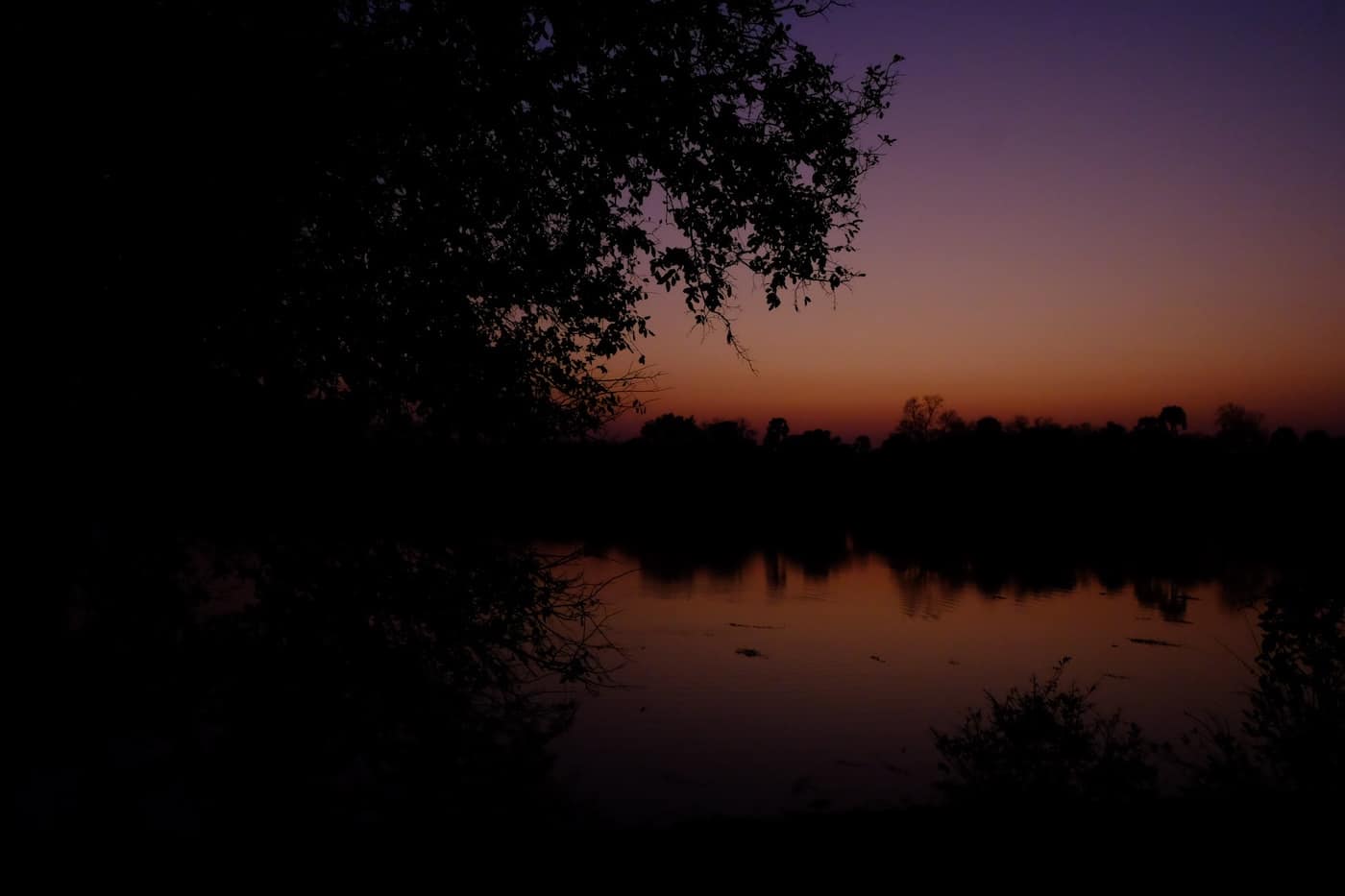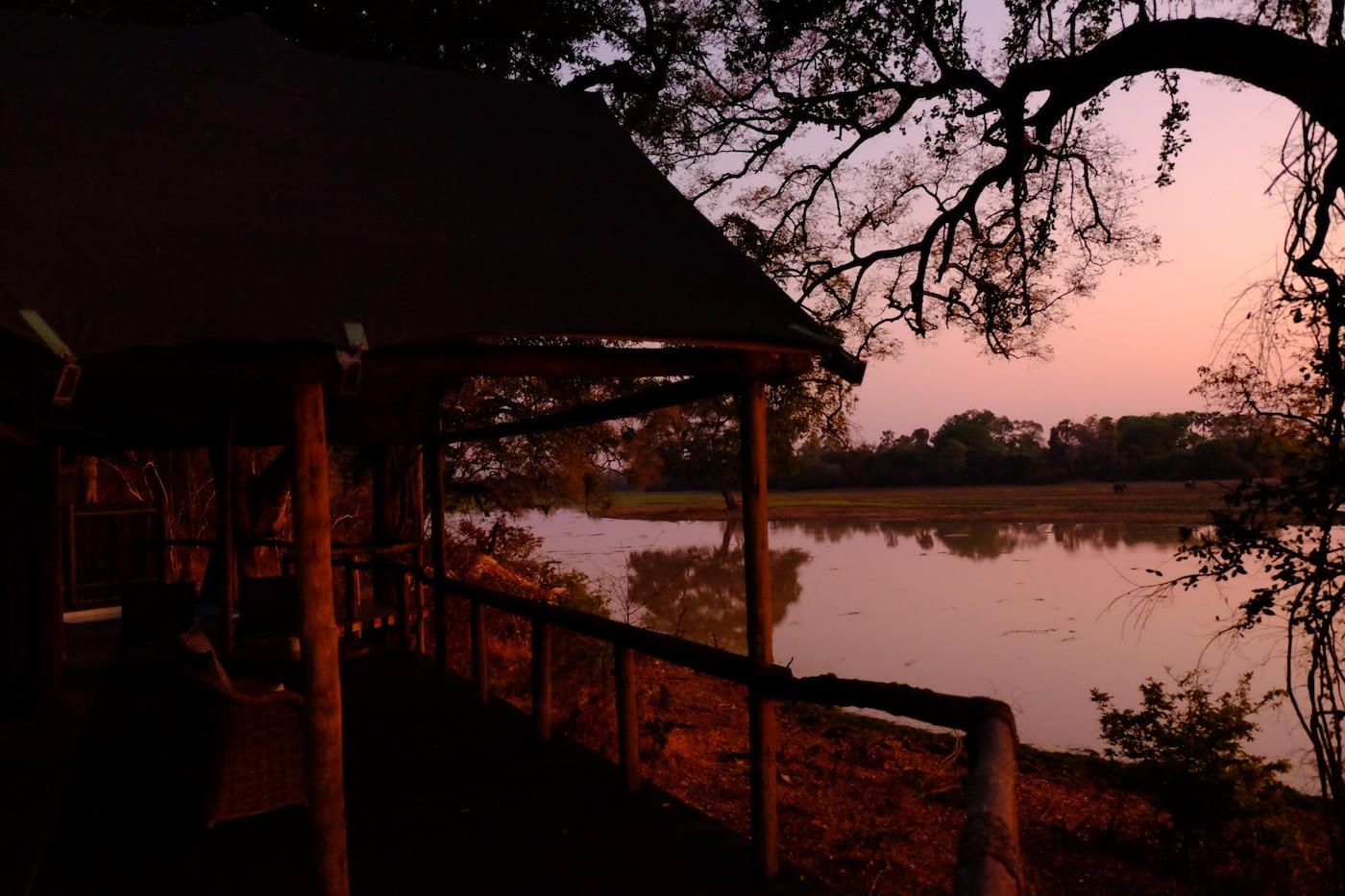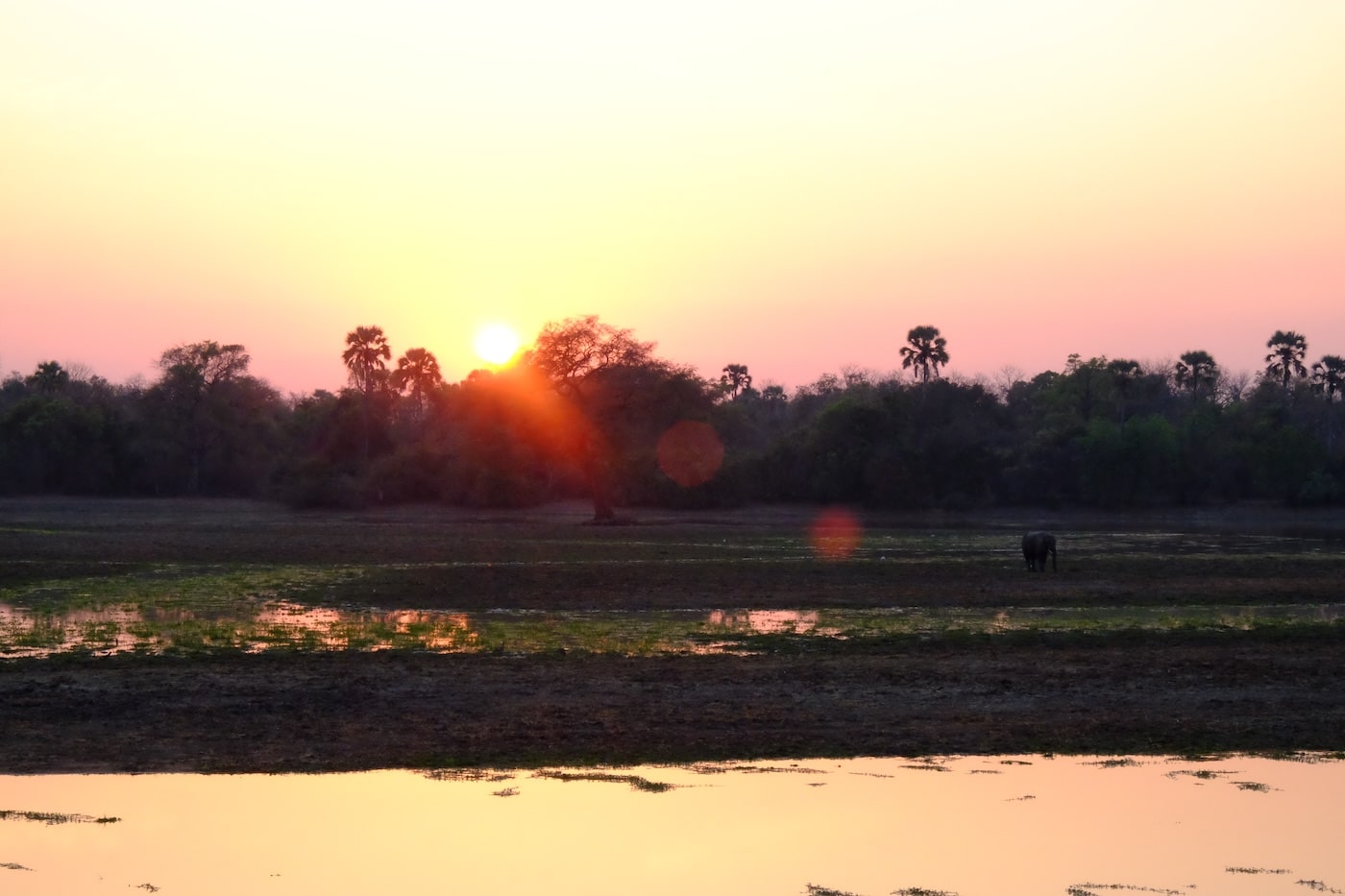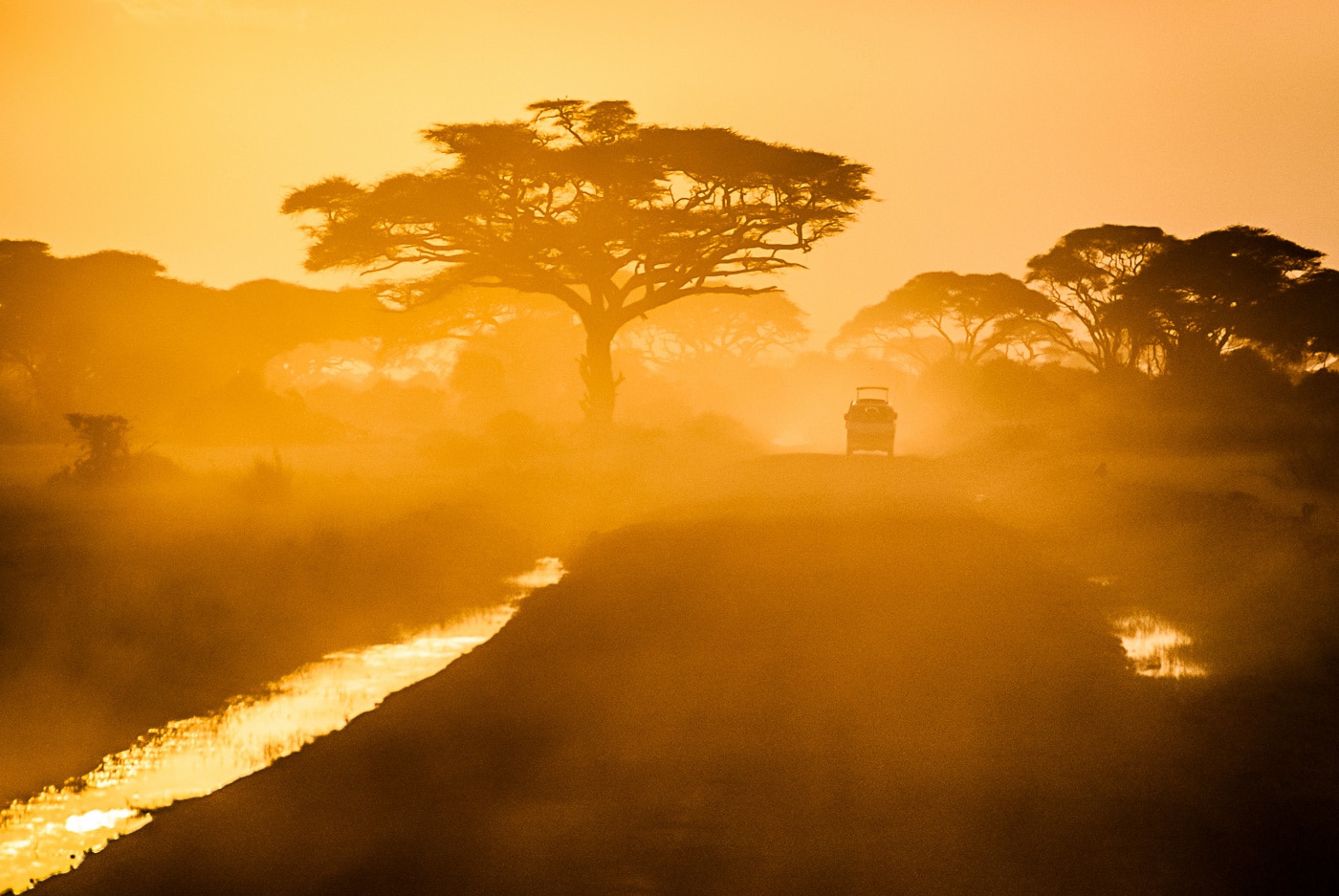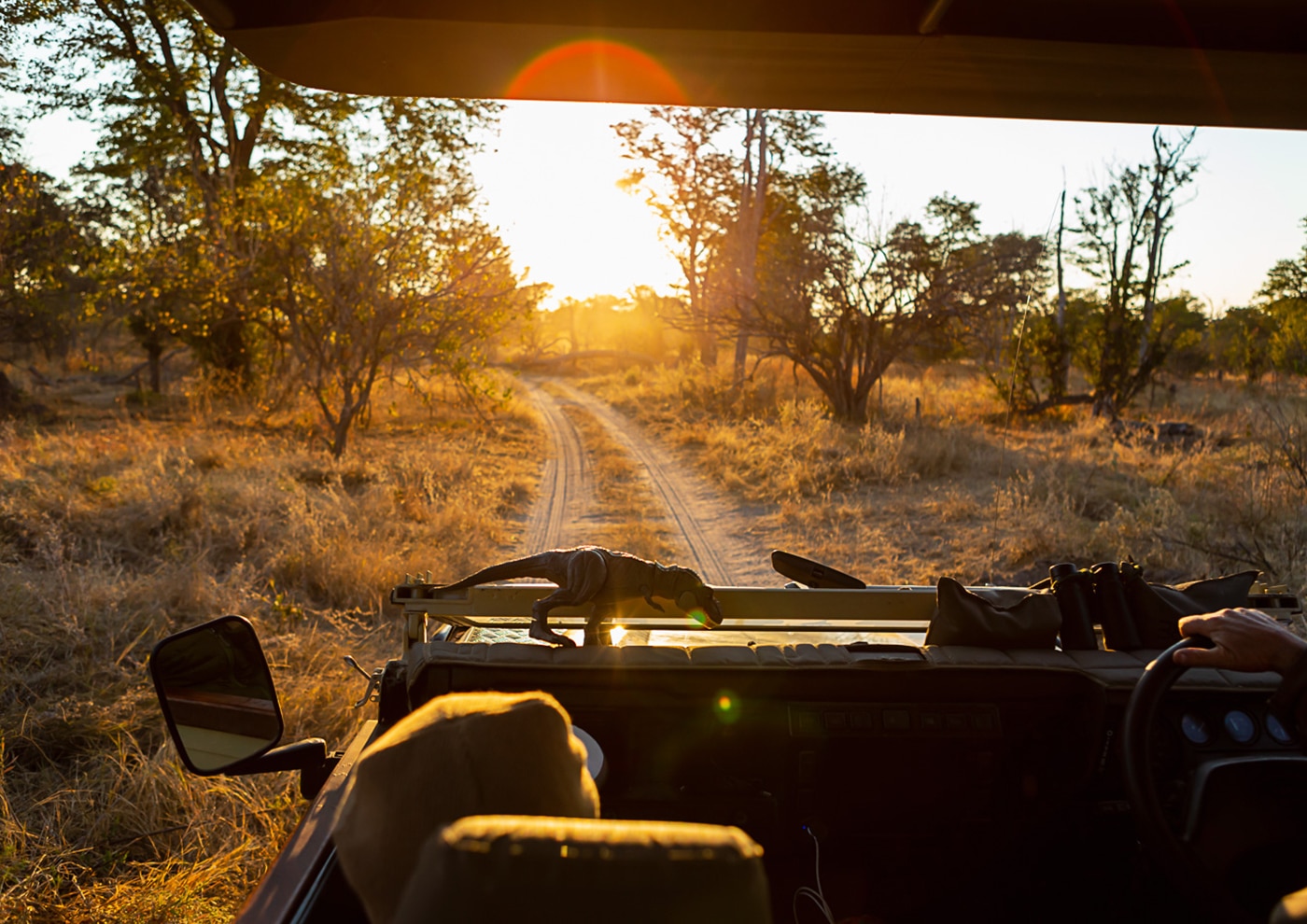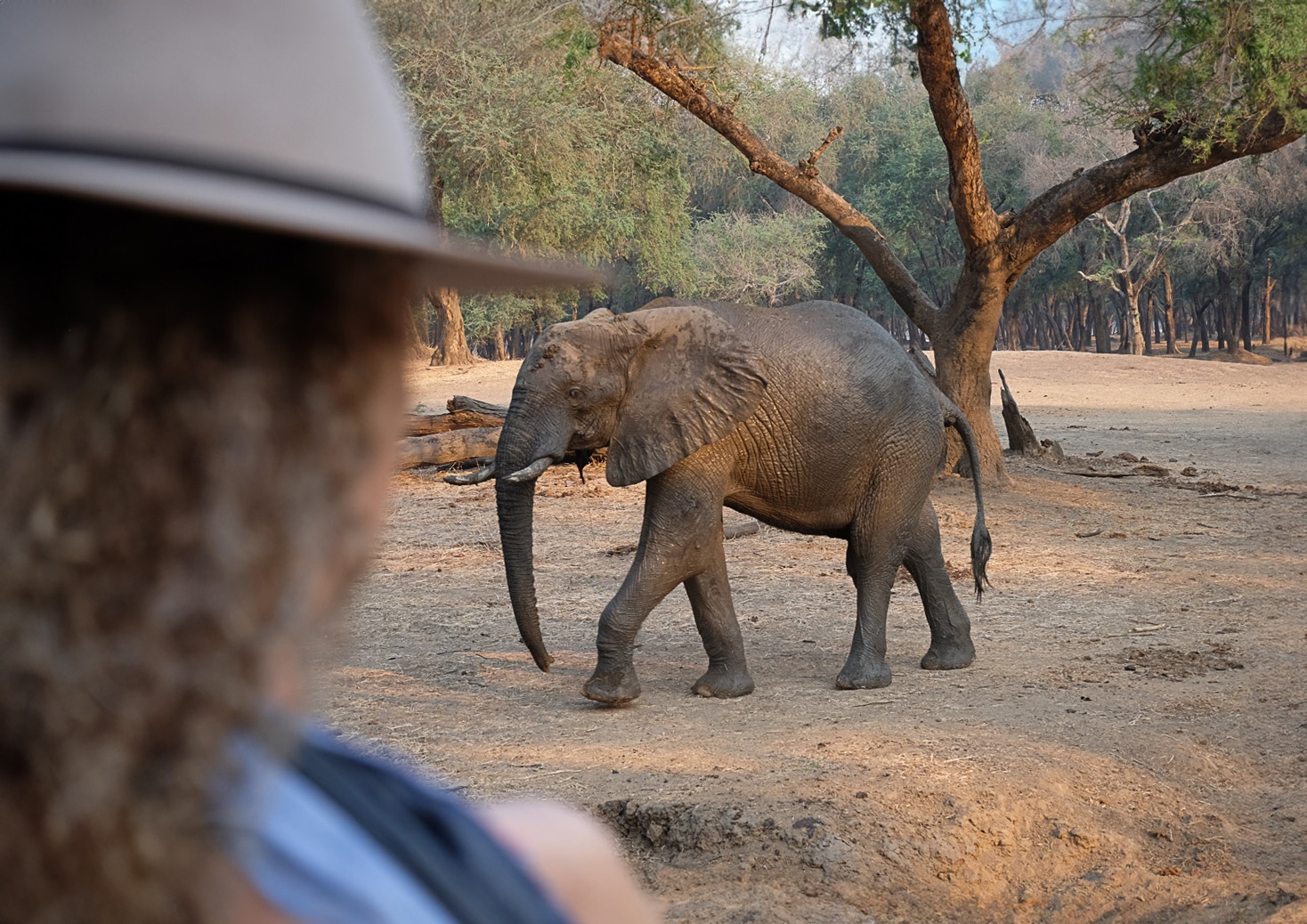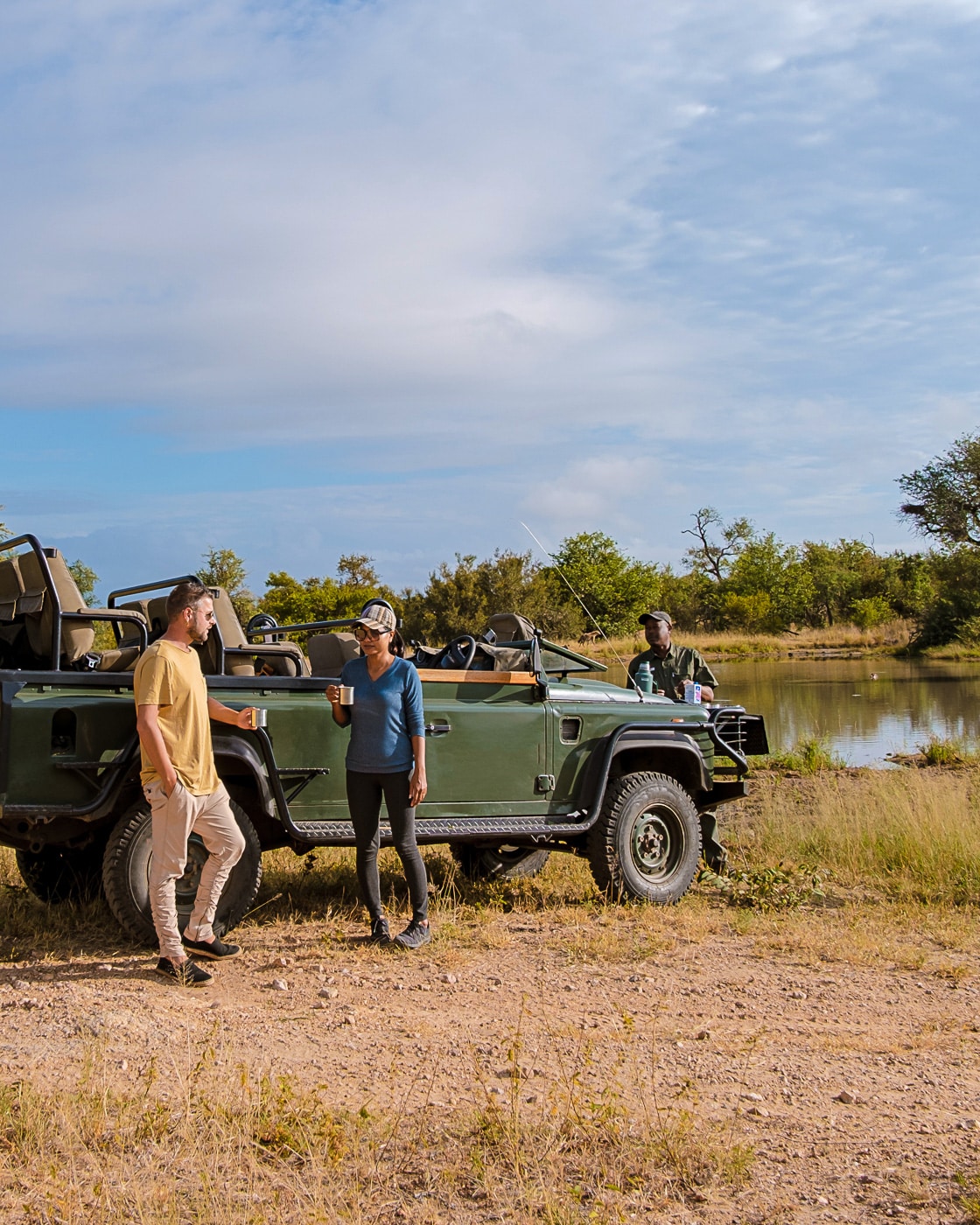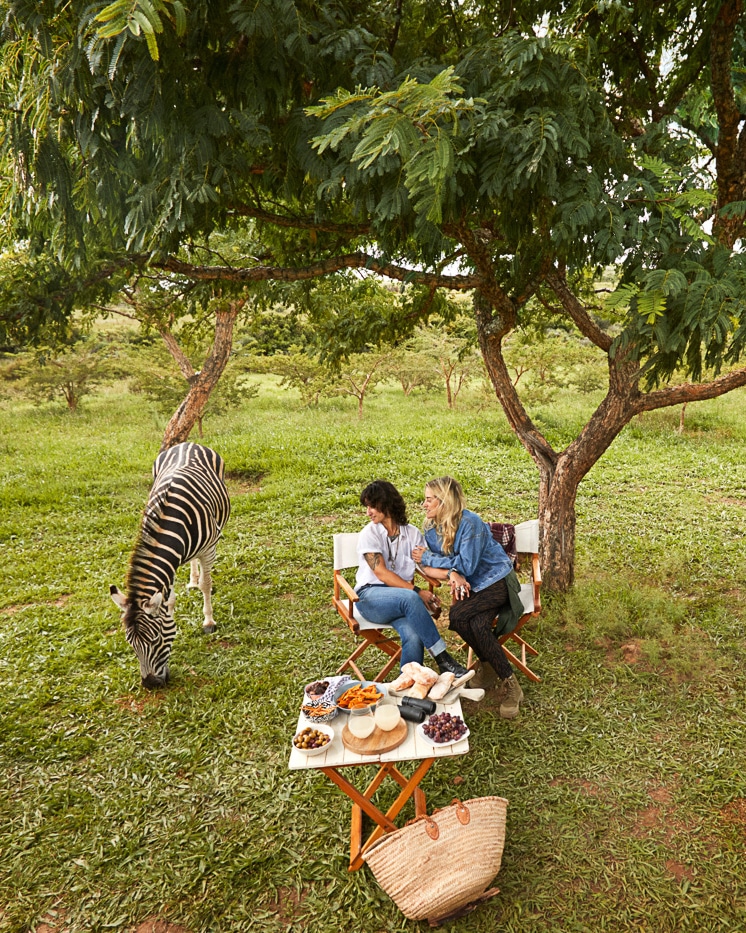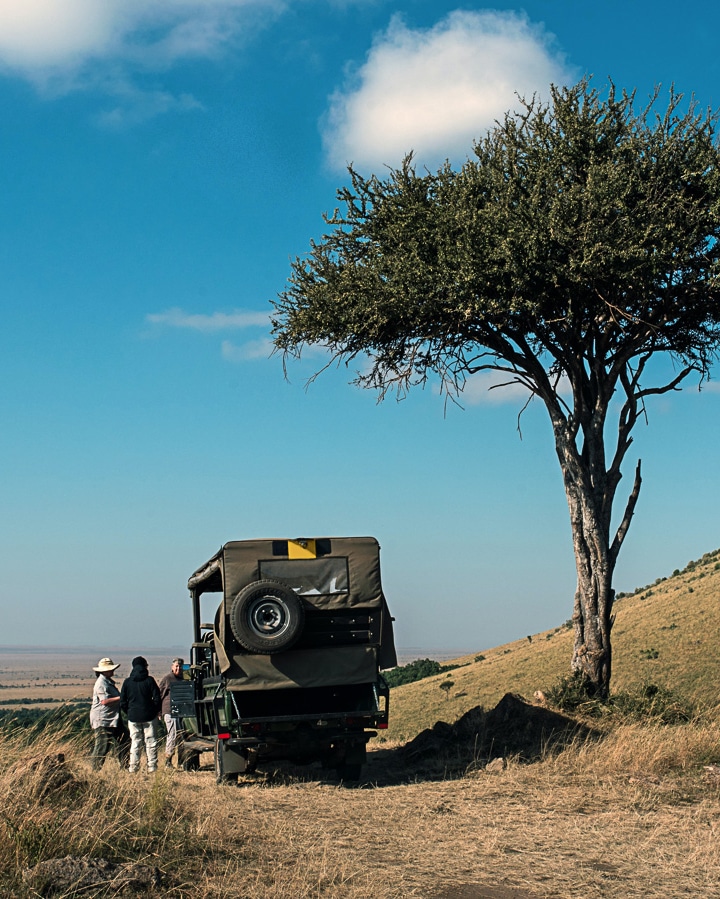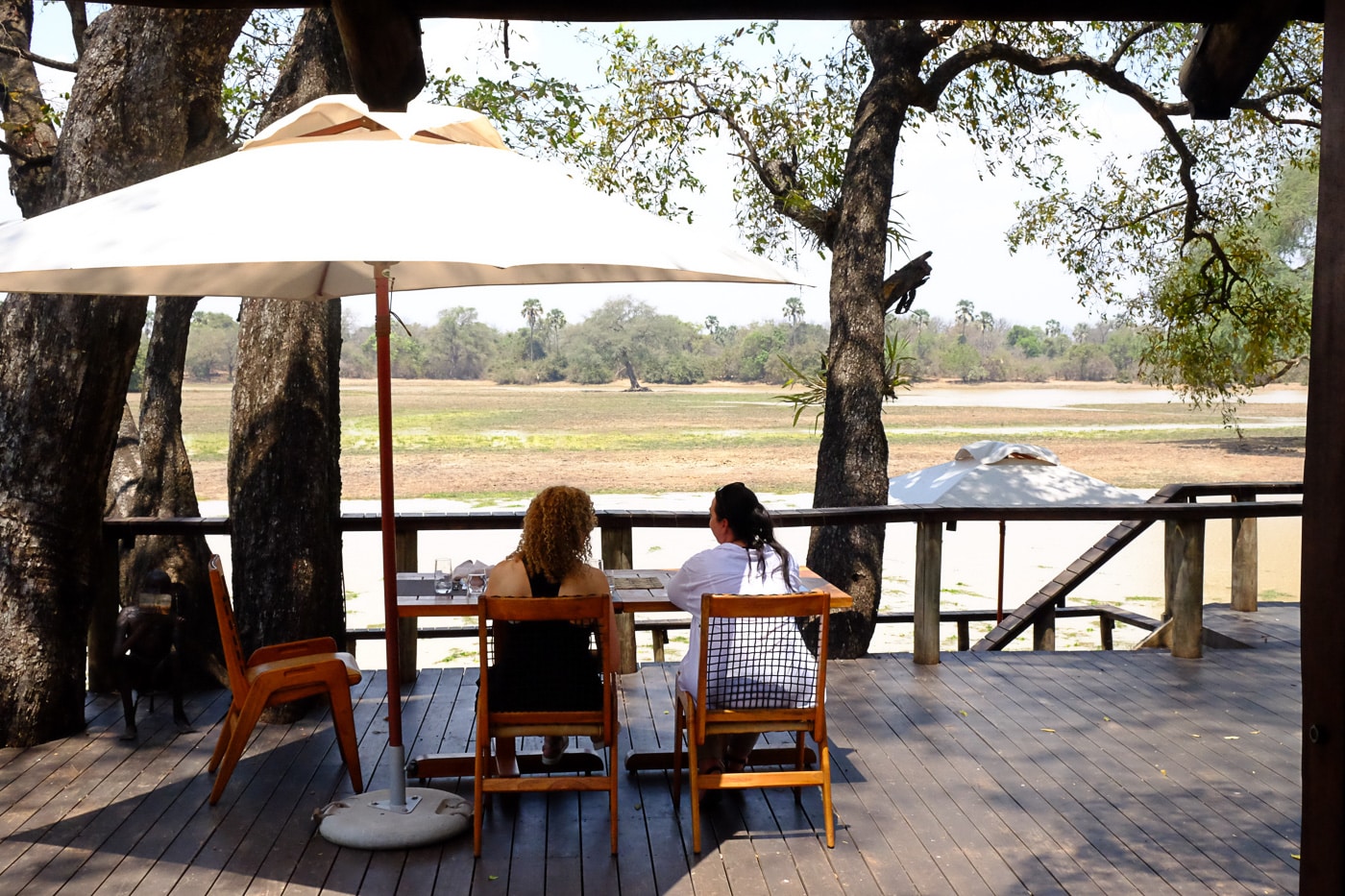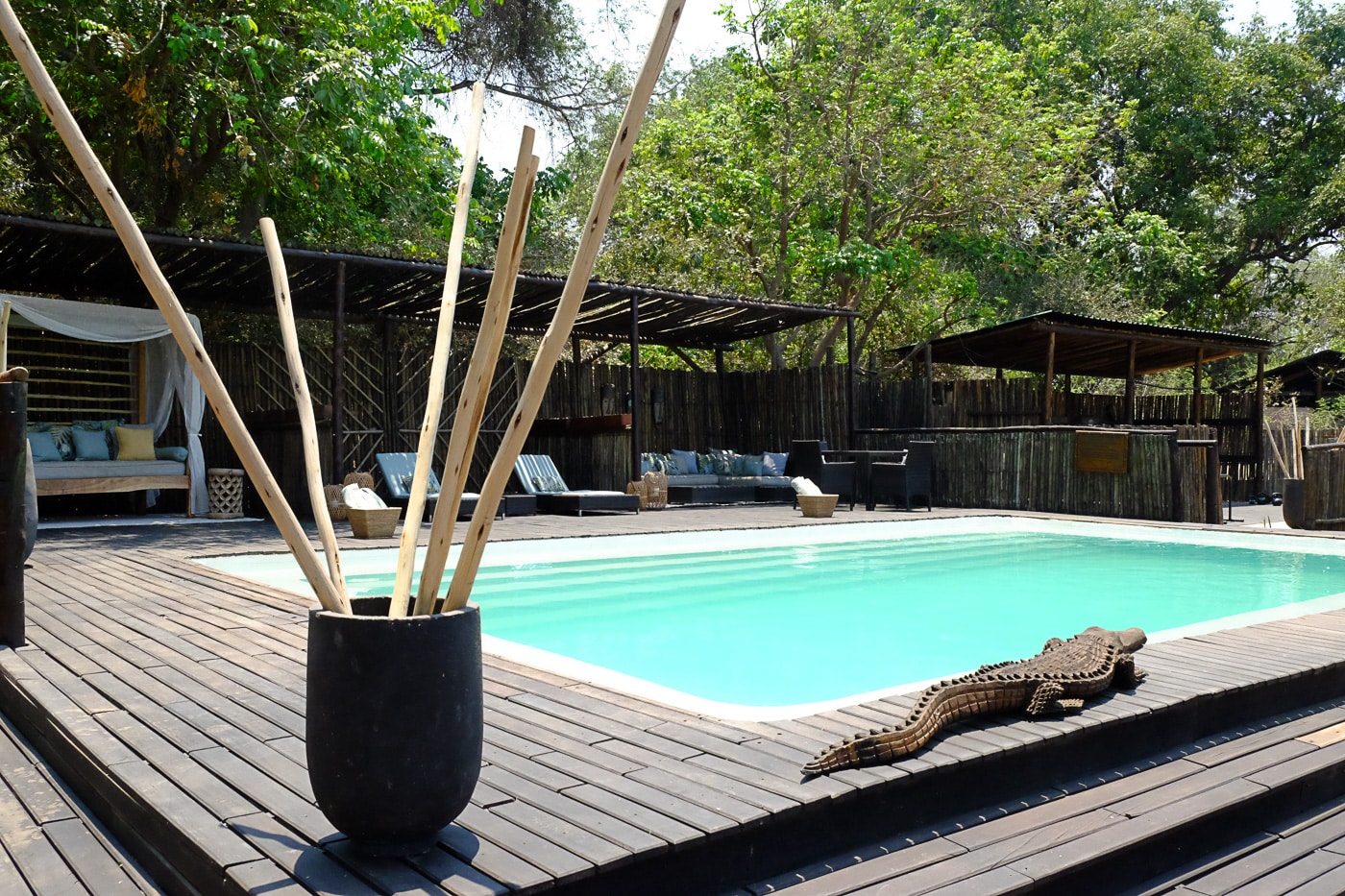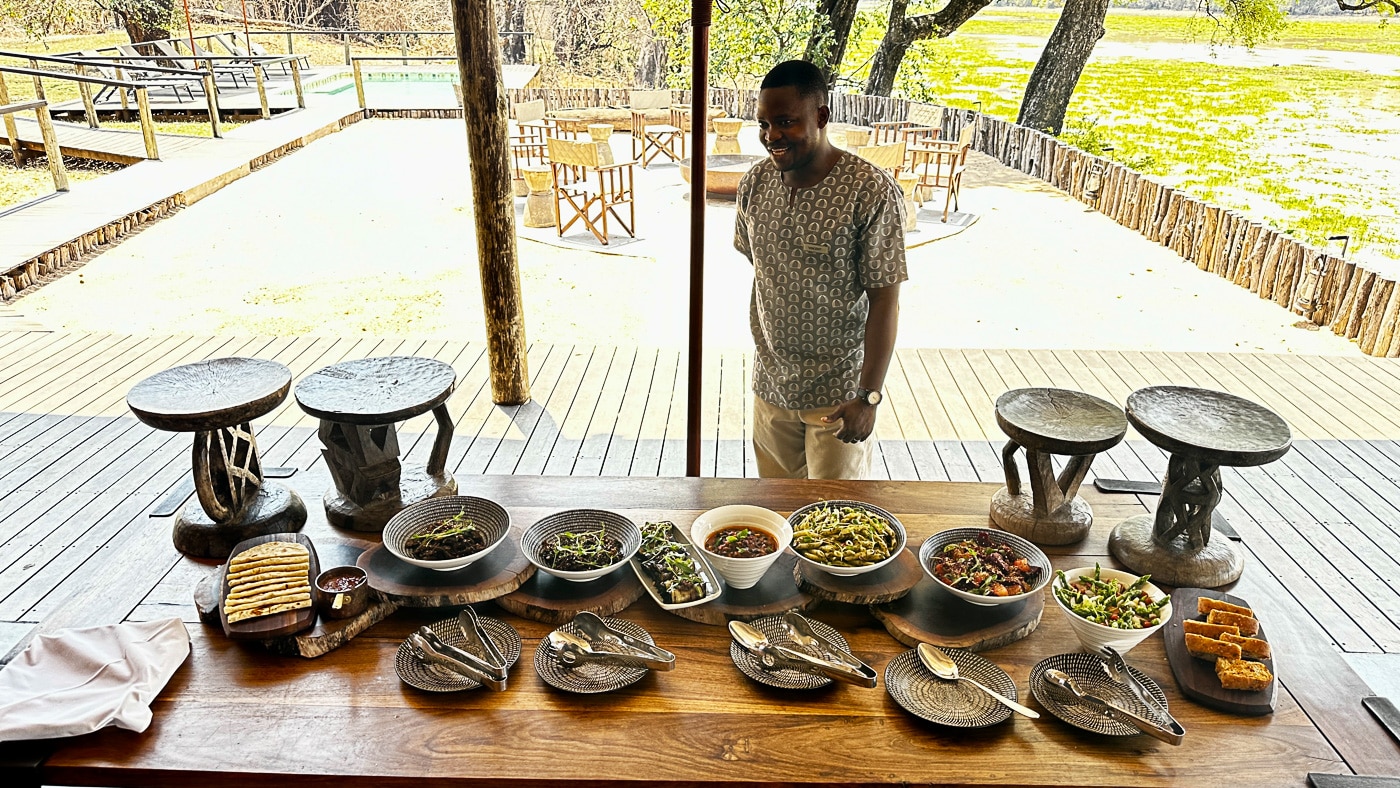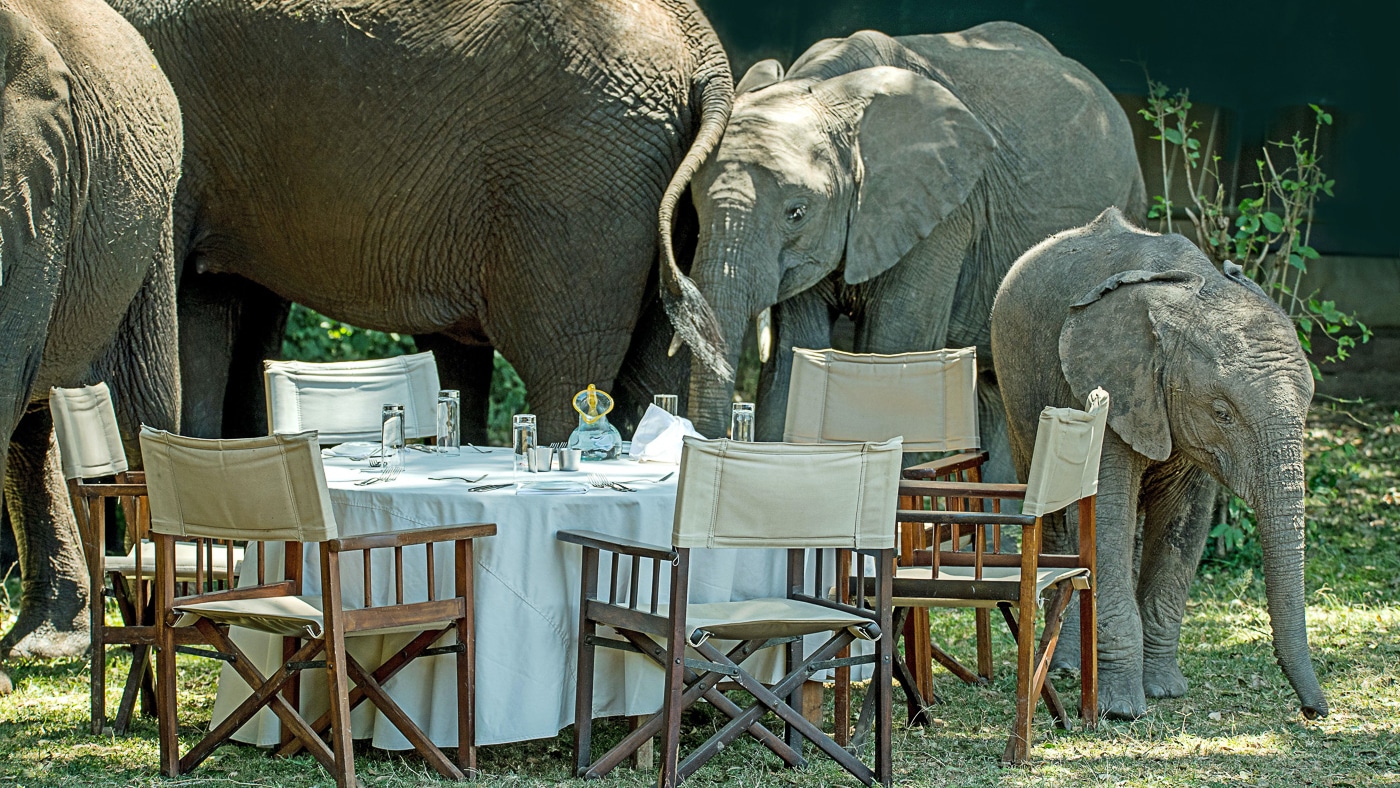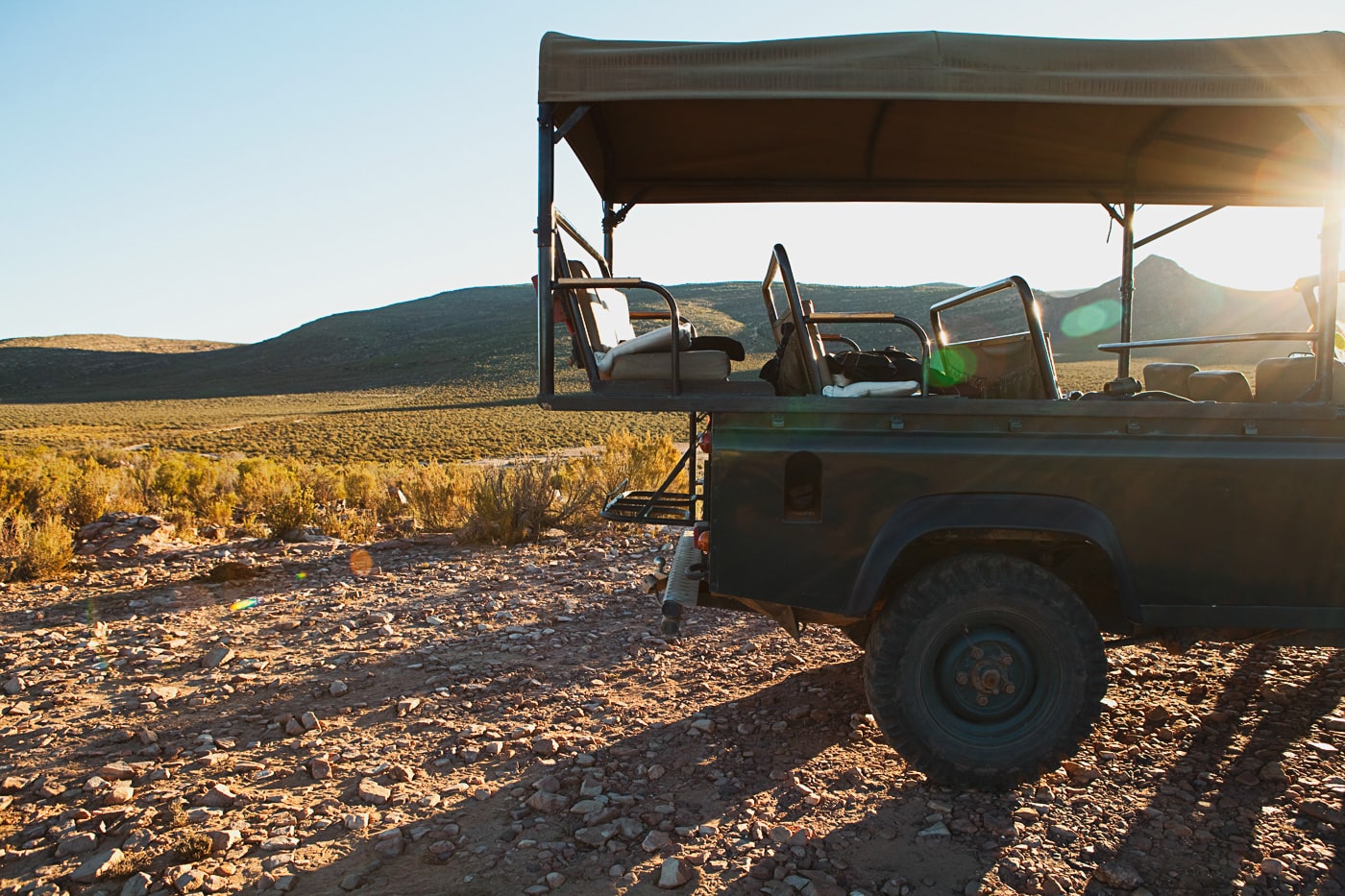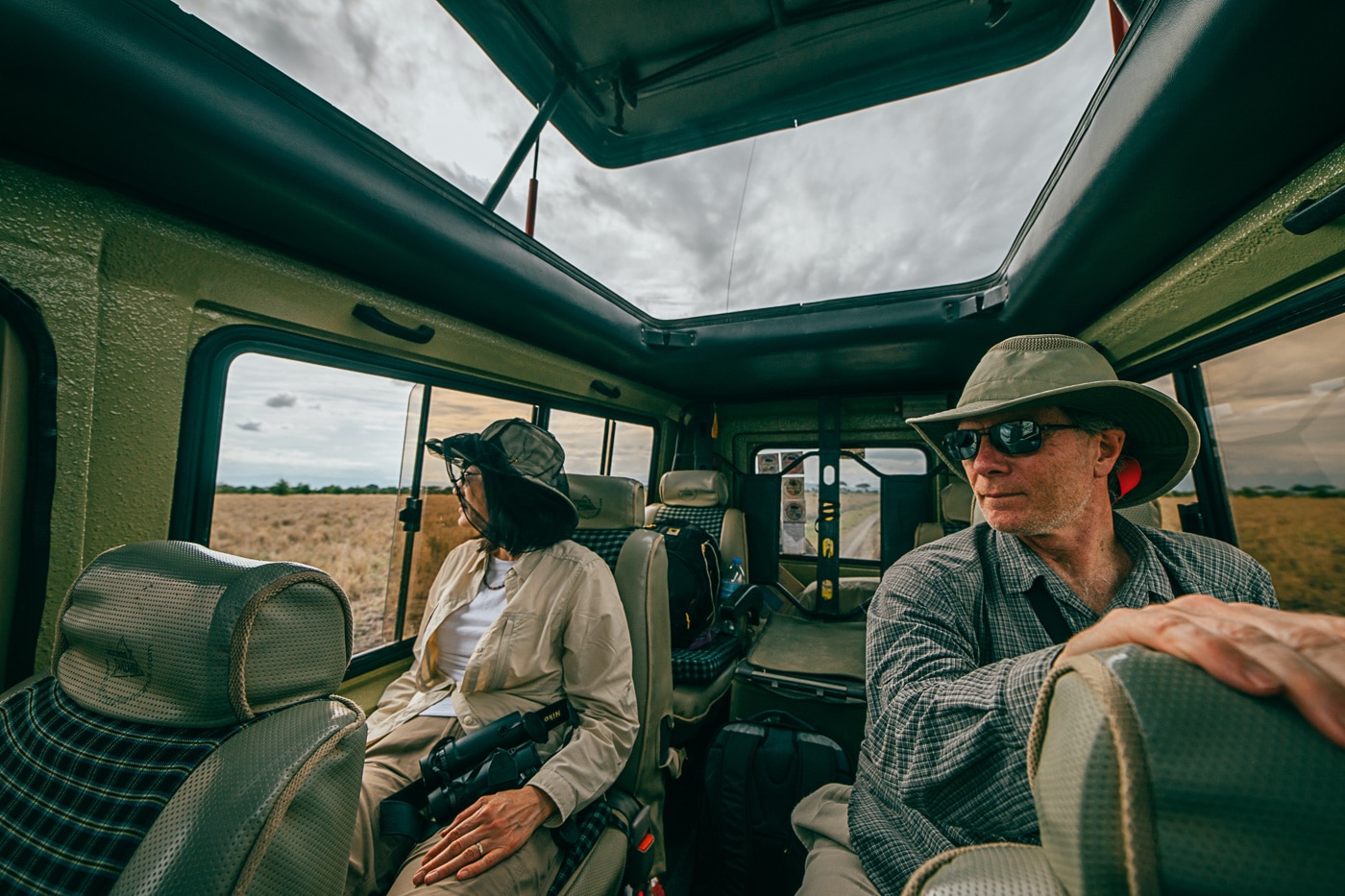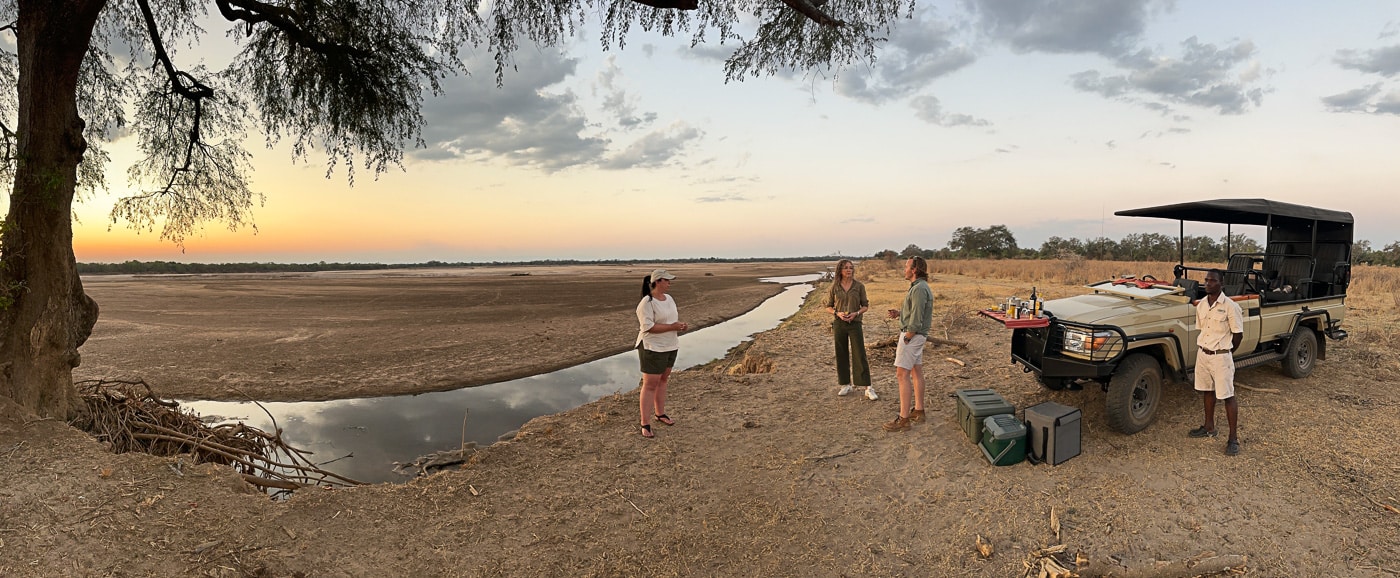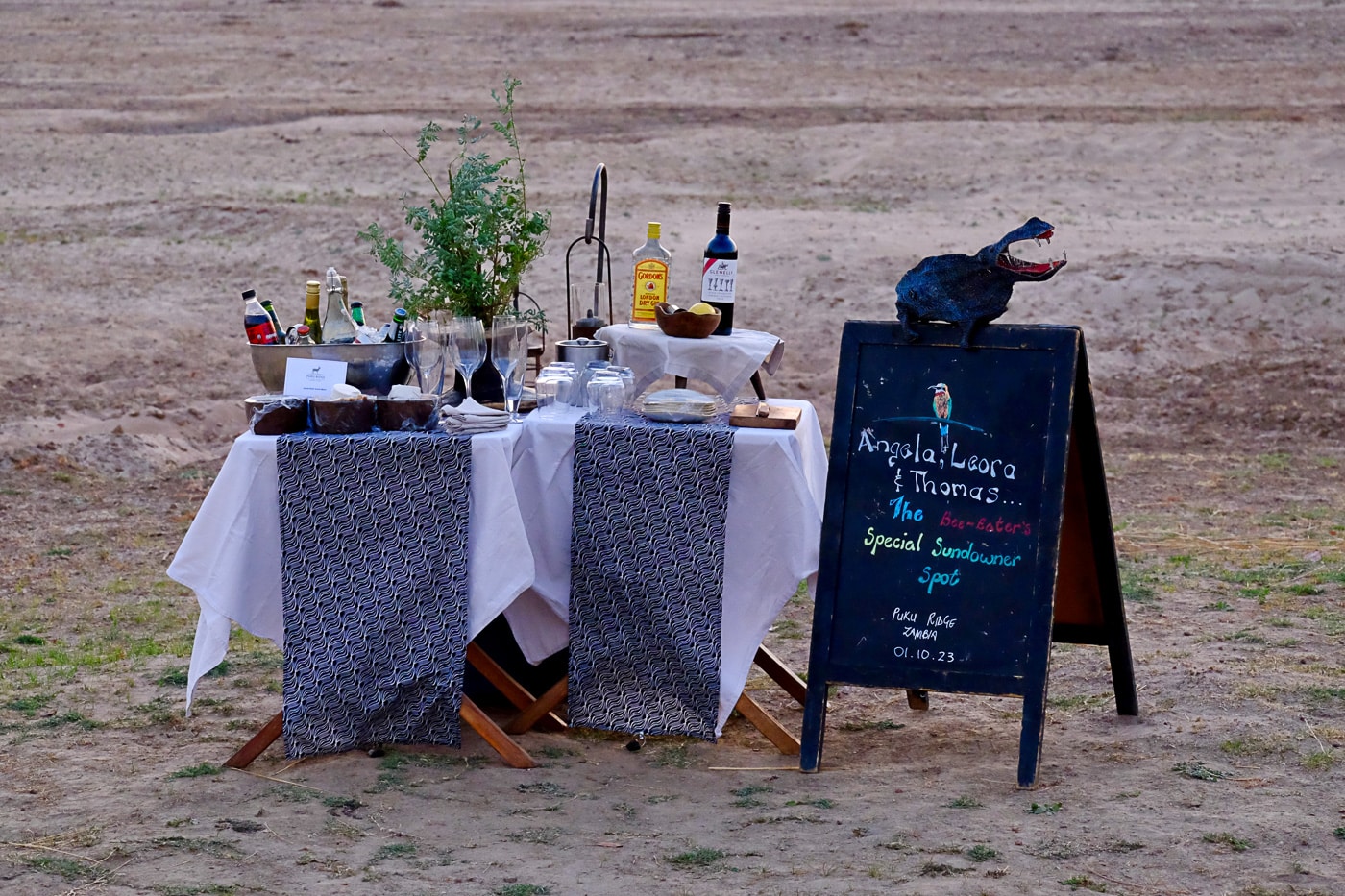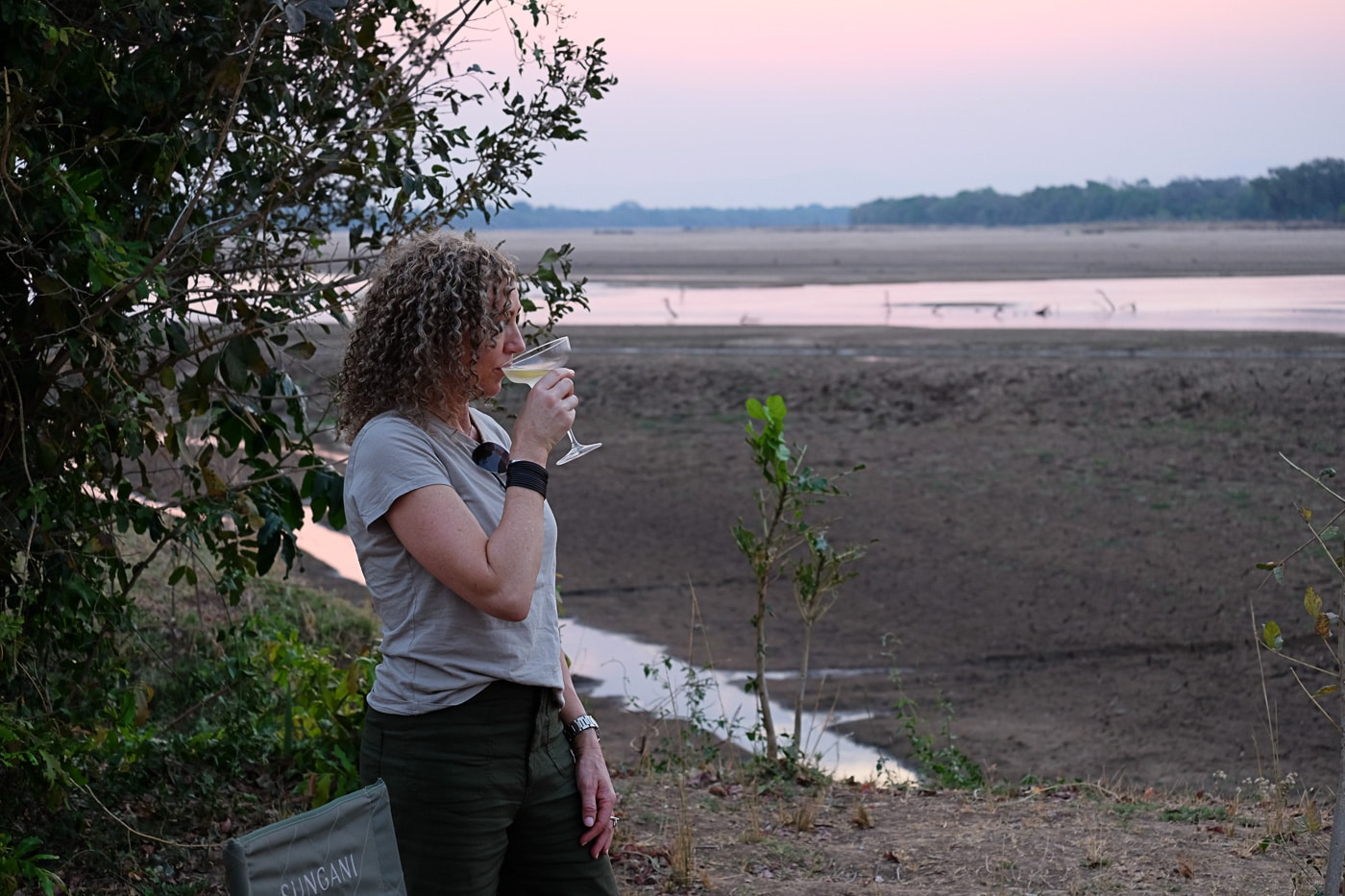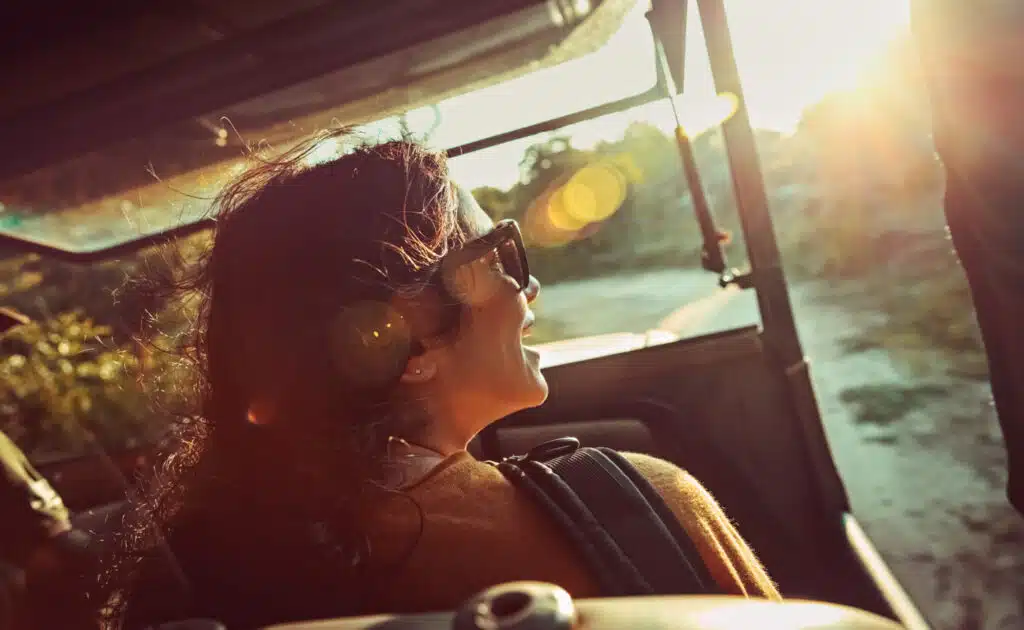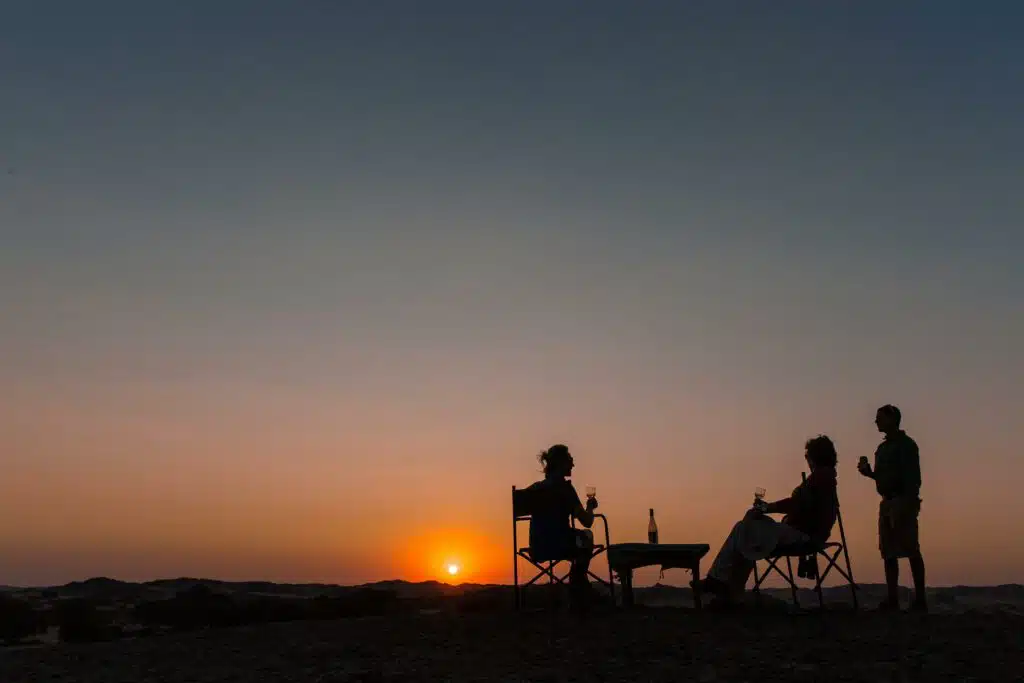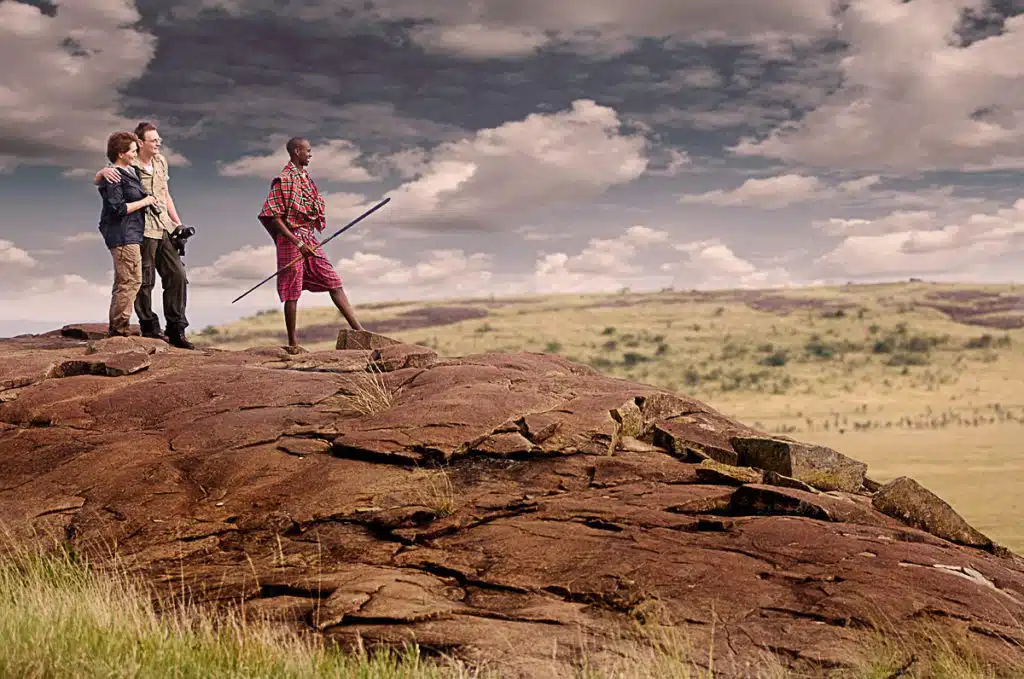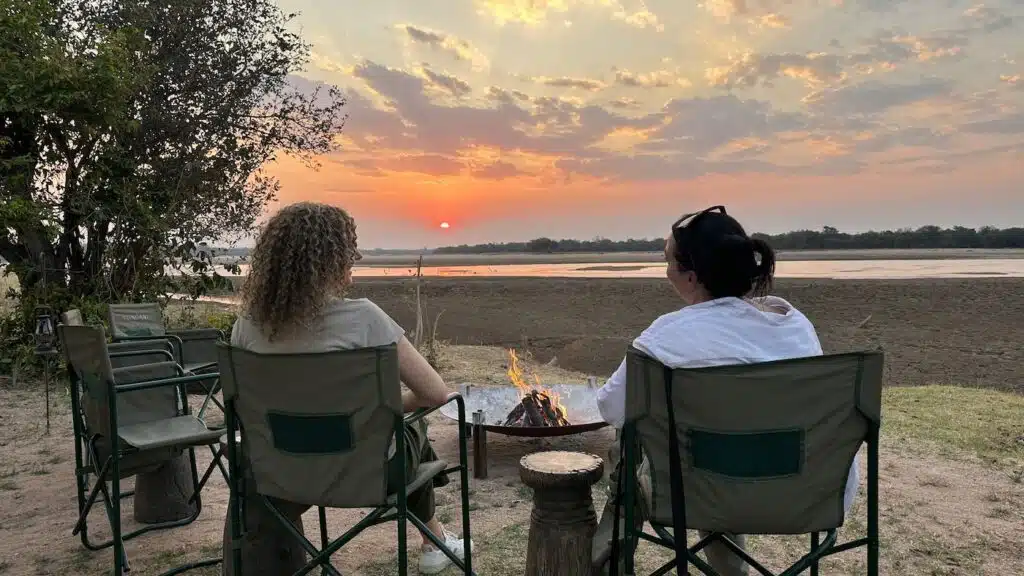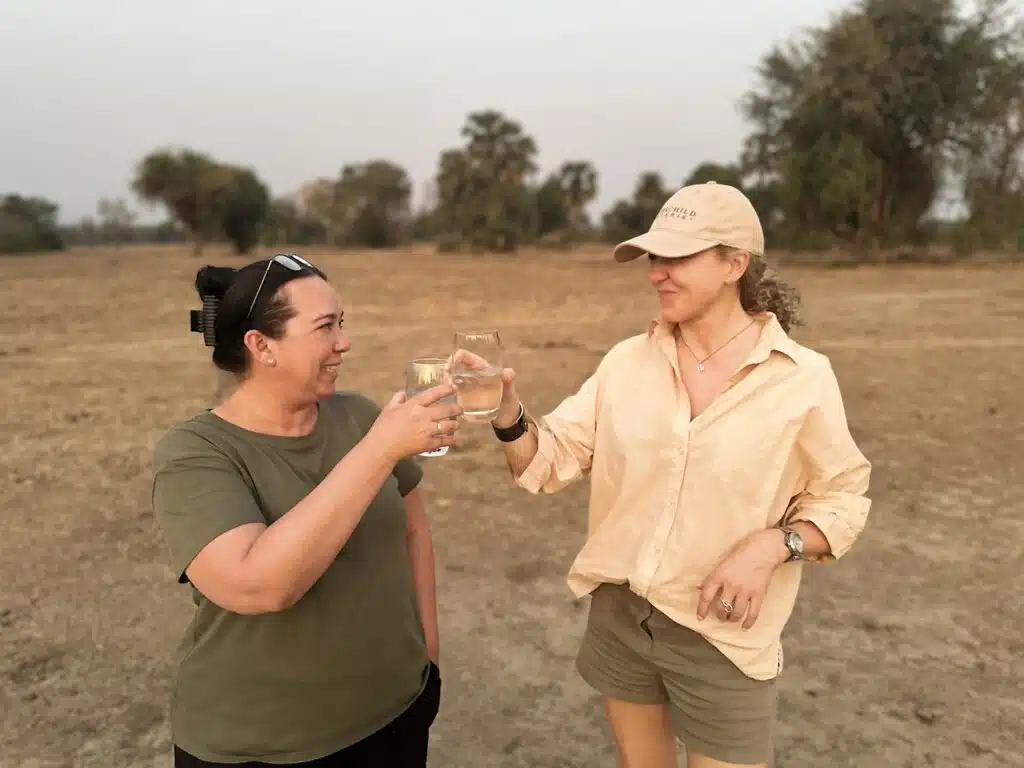BUSH TIME
What to Expect From a Day on Safari
Safaris are so overflowing with unique moments, once-in-a-lifetime experiences, and unexpected occurrences that no two days will ever be the same.
Even if you were to wake in the same camp at the same hour, board the same game vehicle with the same guide, and weave through precisely the same route as the previous day, the unpredictable wild would always make the excursion one of a kind.
Despite this, and no matter where you may journey, numerous consistencies to a day on safari have been adopted throughout the industry and across Africa.
Whether on the flood plains of the Okavango Delta or the arid sands of the Kalahari, a safari schedule follows a certain pattern, and this is predominantly dictated by the rhythms and flows of nature.
From the forests and hills to the grasslands and deserts, the hours of dawn and dusk are the times of greatest activity. By night, predators may be stalking their prey, but finding, observing, and photographing them is somewhat problematic, for obvious reasons.
At the height of the day, lion and zebra can be seen nonchalantly going about their day with little concern for one another, and though herbivores will always be on high alert and hunts are not unheard of, the brightest hours leave big cats at a disadvantage, their increased visibility usually enough to render any pursuit futile. At certain times of year the high sun may also be too warm, the expenditure of energy completely unjustified. Lion and leopard will seek shade, snoozing away through the hotter hours in preparation for the evening’s activities.
Therefore, the schedule of a day on safari is planned around those times of greatest opportunity: the growing light of dawn, the cooling of the afternoon, the sunset, and the first hours of darkness.
So what does a typical day on safari look like?
While each camp, lodge, and location will have its own variations, differing activities, and altering ecosystems, most will loosely reflect the following schedule:
- An Early Start
- Setting Out
- The Morning Drive
- Snack Time on Safari
- Back Home
- Morning Variations
- Time for Lunch
- Into the Afternoon on Safari
- Dinner o’Clock
- Nights on Safari
An Early Start
The typical day on safari begins before dawn, a gentle wake-up call rousing you to the sounds of the bush and anticipation of the day ahead. Fresh coffee may be brought to your room or will be served over a light breakfast at the camp’s boma or dining area.
Fresh fruit, toast, and perhaps some porridge or oatmeal cooked over the open coals in a potjie (cast-iron pot) may be on offer, and your guide will join you to discuss the day ahead. From waking, you will usually have 30 minutes to one hour until departing on your first game drive of the day.
Setting Out
Once fuelled for the morning and ready to go, you will board the game vehicle. Your guide will have either gathered your water bottles for filling the night before or will remind you to top them up before departure. They may also suggest a jacket or additional clothing if the morning is brisk, insect repellant, sunscreen, and other necessities when on a game drive. These items become second nature after your second or third drive, but guides will ensure your comfort and safety prior to setting out for the morning.
The Morning Drive
The length of a game drive varies considerably depending on the day’s plans and opportunities, the environment, and additional activities, such as bush lunches or boating excursions.
However, on average a morning drive will last approximately three or four hours. While the route is somewhat predetermined by the guide, there is always the possibility of a detour if word of a sighting comes across the onboard two-way radio.
Your guide will take the time to share key information throughout the outing, be it regarding certain trees in flower, a murmuring flock of birds in the sky, or the family relationships of a pride of lion.
Guides will also pay close attention to their passengers’ wishes and interests. Some clients may be content to simply go for a steady drive, while others may be avid birdwatchers or photographers, and the guide will customize each excursion accordingly. They will stop for photo opportunities and spend extra time in areas of particular interest for their guests.
Snack Time on Safari
By mid-morning – usually about 11 o’clock, depending on your departure time – your guide will find a picturesque and safe place for a morning snack. Tea and coffee, soft drinks, and a few light snacks will be served, and this is a good opportunity to freely discuss all you observed during the morning drive and any aspirations you have for the remainder of the drive or the rest of the afternoon.
‘Bush coffee’ will usually be served with about an hour of the drive remaining, and you will then wend your way back to camp.
Back Home
On arrival back at camp, you will be presented with a cool drink and face cloth to wipe away the dust of the drive. You will then be informed when lunch will be served and enjoy the afternoon at leisure. A dip in the pool, a rejuvenating massage, perhaps a siesta, or some time in the lodge’s library – the choice is yours as to how to spend the next few hours.
Morning Variations
Of course, a game drive isn’t all there is to do on safari. Bush walks, boat trips, horseback riding, fishing, ballooning – each destination provides fresh options for a selection of activities.
Bush walks or walking safaris usually begin slightly later than game drives. While the cooler hours of the day are desirable, safety requirements of a walking safari necessitate increased visibility, so the sun will need to be just a little higher in the sky. You can learn more about walking safaris in our recent blog, or in the video below:
If you are fortunate enough to embark on a hot-air balloon excursion, you will need to set an early alarm. Ballooning trips depart camp at least an hour before dawn, sometimes as early as 3 am, so as to be aloft as the sun is rising.
The mornings may involve a boat or canoe trip, or horseback riding. Though also starting early, they usually depart at a more leisurely hour than game drives. A similar schedule is followed, with a light breakfast before leaving and bush coffee and a snack on the water or under the shade of a tree. With later departures, a more complete breakfast is often served in camp.
Time for Lunch
One aspect of a safari that rapidly becomes clear is that you’ll never go hungry! Meals are abundant, snacks numerous and even the healthiest of appetites will be regularly sated throughout the day.
Some game drives might run across a full day or reach beyond the morning. In such cases, a bush lunch will be arranged, but this is a far cry from a bruised apple and soggy sandwiches in a brown paper bag.
Ahead of your arrival at an allocated lunch destination, a team will arrange your lunch table, complete with linen, crockery, glasses, and a complete set of cutlery. Coffee and more invigorating drinks will be offered and a chef will be on hand to prepare a fine meal. Though substantial and catered to your dietary preferences, the remote location may mean that you won’t have a diverse five-course menu to choose from, but neither will that detract from the stunning experience of dining in the bush.
Lunch at camp is an affair worthy of any restaurant, and you will often be presented with a daily menu and a variety of options. Many lodges and camps will provide a buffet to which you can add a choice of dishes cooked to order and, again, specific to your dietary wishes.
It is quite remarkable that here, in the remote African bush, your meals are served precisely to your needs, with no reminder to staff necessary and no embarrassing returns to the kitchen because the chef was unaware of your lactose intolerance. Guest requirements are learned prior to your arrival and adhered to throughout your stay.
A leisurely lunch will usually last between approximately 1 and 3 o’clock, and this is a wonderful opportunity to relax and unwind, converse with staff and management, and hear the many anecdotes of guides.
As you enjoy lunch, your personal guide will return to discuss the afternoon’s plans, informing you when you will be departing and what might be expected.
Into the Afternoon on Safari
Well rested and ready for another adventure, you will return to the lodge for afternoon tea. Light sweet and savory snacks are served, along with tea, coffee, and soft drinks, to ready you for the afternoon’s activity. An afternoon game drive or activity will commence at about 4 pm. Again, your ever-attentive guide will have briefed you on departure time and any necessities – warmer clothing, bug spray, and so on – and will often greet you with your pre-filled water bottles in hand.
There is a certain anticipation that builds on an afternoon drive. Though sedate at the beginning of your excursion, the predators begin to stir, readying themselves for nocturnal hunts. The grazers will become edgy and more alert as the sun descends, despite their diurnal tendencies, and while some may sleep, others will be keeping a watchful eye over the darkening landscape, quick to the alert if any suspicious movements are spotted.
Your afternoon drive begins early enough to still have at least an hour of bright daylight, with plenty of opportunity for photography and clear sightings of wildlife. Again, your guide will carefully and attentively cater to your wishes and any sightings in the region.
As the sun descends, your guide will begin searching for a location for the time-honored safari tradition: sundowners.
Before leaving the lodge or camp, you will have been asked for your preference of beverage, be that a wine or beer, gin and tonic, or soda. Your guide will park, invite you to dismount, advise you of a private, convenient, and safe bush bathroom if required, and set up a table for your sunset drinks.
Kept ice-cold in the vehicle’s cool box, your drinks will be served along with a collection of nibbles. Nuts, home-baked potato chips, and grissini are common, but small pastries, spring rolls, crudités, and other hors d’oeuvres may be served.
Few things compare to sipping a drink in the last light of day, the sounds and smells of the bush enveloping you, and the growing excitement of the unknown nighttime welling inside you.
Before your journey back to camp begins, your guide will describe all that your night drive might entail. You will learn what might be spotted and told to inform him in the unlikely event that you see anything before the hawk-eyed spotter. With a low range of visibility in the darkness, the thrill of a night drive is palpable, and though fewer animals will be seen, such sightings will invariably be far more rewarding. Lion and leopard will be on the prowl, rather than languishing in the afternoon sun, civet, genet, and honey badgers will emerge for the evening, hippo may be spotted grazing on land if you are near a water source, and your senses are piqued for the slightest sound or movement.
Dinner O’Clock
Your return to camp will again be punctuated with a welcome-home refresher and cool face cloth, and you will be informed of dinner service, usually 30 minutes or so after your arrival.
Again, your evening meal will be impeccably catered to your wishes, with a wide range of offerings. It is often at dinner that you will have the opportunity to sample local dishes alongside a more conventional menu, the chefs delighting in serving their national cuisine to curious guests. These are more likely to comprise stews, grilled vegetables, and grains rather than roasted grasshoppers or lizard kebabs, so will be both palatable and delicious for the majority of diners.
During your meal or at some stage through the evening, you may be joined by the camp’s manager or your personal guide. They will inquire as to whether your stay is to your liking, and if there is anything you may wish for. This is also a chance to discuss the following day. This might involve informing you about departure times or transfers, or taking requests for any specialized activities you may like to participate in.
Some pursuits, such as a hot-air balloon trip take more planning than others, and these will need to be booked in advance, but bush walks, boat or canoe trips, mountain bike rides, and other spontaneous outings can be decided upon the night before. Depending on the activity, your wake-up call will be arranged, sometimes with the added choice of tea, coffee, or on infrequent occasions, breakfast served to your room.
Nights on Safari
Though game drives require little effort, they are also quite taxing, and when combined with an early rise, one can be fighting back sleep before the last bite of dinner has been swallowed. You are, of course, more than welcome to return to bed whenever you wish, but there is always a warm fire, a wet bar, and an entertaining companion with which to socialize. You can chat with fellow guests, hear the tales of staff and management, or enjoy a quiet whisky by yourself before your day on safari draws to a close.
There is a great deal of flexibility in a safari itinerary, with every client free to choose their own adventure, both in the planning stages and during their stay.
With so much on offer, it can be far more relaxing to flow with a recommended schedule, rather than concern yourself with a new decision every day. Your welcome to camp will usually incorporate your list of wishes for your stay, and this will be carefully arranged by staff and presented in a suggested itinerary.
With wildlife viewing often the primary pursuit, a certain rigidity exists if you hope to catch nature at its best. To enjoy the very best that Africa’s animals have to offer, it is we who must adhere to their schedule and not the other way around.
Every safari is different, every day unique, but a typical day on safari has been tried and tested over decades to provide you with the very best African safari experience possible.

